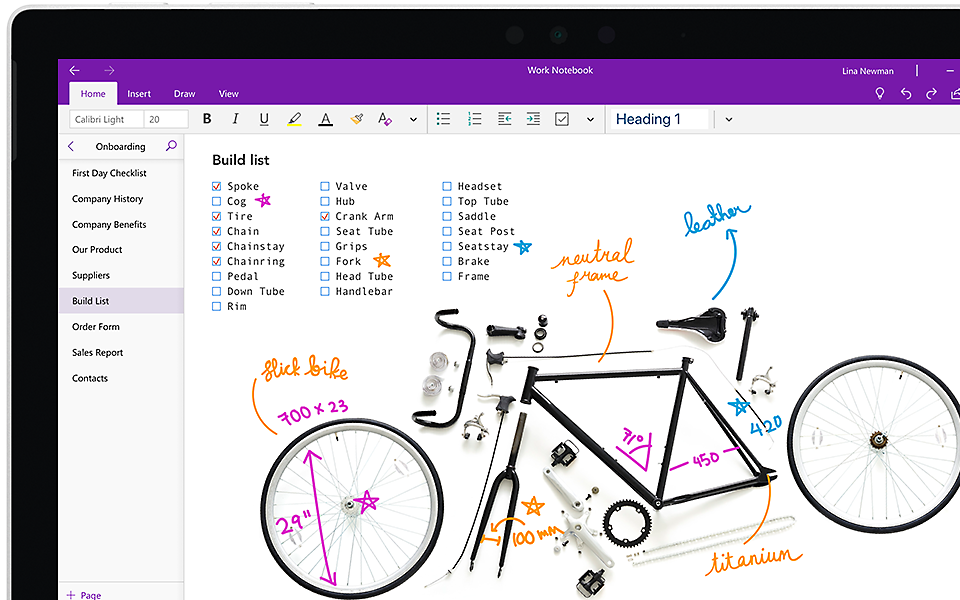With all the moving parts associated with board meetings, mastering the art of running them effectively can be difficult. In a remote/ hybrid workforce, leveraging virtual board meeting tools and best practices is essential to ensure your next board meeting runs as smooth as possible. Below is a collection of board meeting best practices, templates, virtual board meetings tools, and relevant FAQs to take your board meetings to the next level in 2024!
In this article, we'll cover:
- What a board meeting is
- How to structure a board meeting
- Board meeting best practices
- Board meeting templates
- Board meeting tools for enhanced productivity
- FAQs about board meetings
- Final thoughts
<div id="1"></div>
What is a board meeting?
Before tackling what a board meeting is, it's important to understand what purpose a board of directors serves. A board of directors is a collective group of executives that jointly supervise an organization. They prioritize effective governance, mitigate risks, and maintain trust within the organization.
Board meetings are formal gatherings held by the board of directors that aim to discuss major problems, areas of concern, vote on decisions, review performance, consider policy issues, and, in some cases, perform the legal duties of the board. Regular board meetings empower board members to work collectively and steer their organization towards long-term success and sustainable growth.
It's important to note that board meetings are a crucial component of corporate governance, providing board members with a structured environment for decision-making, accountability, strategic planning, risk management, shareholder relations, compliance, and communication.
<div id="2"></div>
How is a board meeting structured?
Board meeting structure can vary depending on how mature a company is. Start-ups and tech companies sometimes favor a more pragmatic approach, while larger corporations typically follow strict guidelines meant to help maintain order and structure. Still, many of the components of these board meetings remain very similar, and tend to go in the following order:
Circulating documents
Before a board meeting begins, a document is usually circulated, consisting of a report by each director itemizing anything that needs attention and their input concerning various issues.
Presentations
When the board meeting begins, a person, usually the CEO of the company, presents an overview of how well their goals are being met and any issues that need to be addressed. Directors may present on their sections as well, or merely be present to answer questions if the report was sufficient.
Topics that need addressing
Following this, a member of the board will raise topics that they feel need addressing or comment on progress toward various goals. The board chair will then elicit discussion by seeking comments on what was presented and take action on any issues that came up.
Senior leadership performance
Occasionally, the board may wish to have a discussion without the CEO or others leaders present, in order to assess their performance. The CEO or other leaders may be asked to temporarily leave the meeting and return at the appropriate time.
Other procedural motions
Sometimes other procedural motions are required before the meeting is adjourned, such as certifying stock option grants.
Adjournment
After all business and matters have been attended to, the board meeting can adjourn.
<div id="3"></div>
Board meeting best practices
Effective board meetings are essential for successful organizations, but there's more to board meetings than simply following an outline or structure. To facilitate effective board meetings, it's important to:
Create a meeting agenda
Having a clear and efficient meeting agenda is an essential board meeting component to ensure it will run efficiently and smoothly. Previously, meeting agendas could be printed out on paper and distributed among attendees either shortly before the meeting starts or at the very beginning of the meeting. Besides the obvious shortcomings of distributing physical papers to board members and attendees, this method does not facilitate communication, collaboration, or accountability. Luckily, in 2024, there are many solutions to this problem on the market.
Fellow, for example, is an all in one AI meeting management solution helping senior leaders and their teams have fewer, shorter, more effective board meetings with AI, behavior driving features, and seamless integrations. Using a meeting management software like Fellow will not only ensure that your board meeting agendas are a single source of truth for every member, it will also facilitate visibility and accountability with collaborative meeting agendas that can be set to require attendees to add to the agenda, and attach any relevant documents. This ensures every board member comes to the meeting knowing exactly what's going to be discussed, and prepared to engage.
{{blog-insert-ai-central="/blog-inserts"}}
Circulate reading materials prior to the meeting
Some board meetings require pre-meeting reading in order for members and guests to come prepared with full context. Circulating relevant reading materials before the meeting starts with enough time to be read thoroughly is an essential task of board meeting organizers. However, attachments and documents can be a headache to distribute among board members, and it can be difficult and awkward to ensure every board member has actually read the relevant materials in advance.
With Fellow, it's easy to attach relevant documents and set pre-meeting action items for all attendees to ensure everyone comes to the meeting prepared with the right context.
Schedule regular board meetings and provide notice
Ensuring your board meetings are occurring regularly and with sufficient notice to the board members is an essential board meeting best practice. Having board meetings too infrequently makes it easy for important topics and information to fall through the cracks and not make it to relevant stakeholders. Additionally, providing sufficient notice will ensure each board member can come to the board meeting prepared to contribute and answer any necessary questions.
Set clear start and end times for each board meeting
Starting and ending board meetings on time is necessary to ensure the meeting stays efficient, effective, and relevant. Starting too late can be disrespectful of other attendees time and schedules, and may cause the board meeting to go over time and encroach on other priorities and engagements.
Encourage attendance and punctuality amongst all meeting attendees
Punctuality is a best practice when it comes to running effective board meetings. Similar to starting and ending the meeting on time, having relevant attendees and board members arrive to the meeting on time and ready to participate where necessary will ensure your board meetings are running smooth and at their best.
Leverage video conferencing software and meeting productivity tools
One of the best and easiest ways to encourage attendance and punctuality is by leveraging the right video conferencing software and productivity tools. Thanks to their remote capabilities that enable people to join from virtually anywhere, video conferencing software ensures that board meetings are accessible to all members and attendees.
With this in mind, it's important to choose a meeting productivity software that integrates seamlessly with your favourite video conferencing tools. Fellow integrates with Google Meet, Microsoft Teams, and Zoom, and allows you to keep your board meeting agenda and notes side by side with your video calls, so you can focus on the discussion and topics at hand, distraction-free.
Summarize key decisions and action items at the end of each board meeting
Once the board meeting has adjourned, it's best practice to create a summary of key decisions and action items for relevant attendees. Because this has traditionally been done by a human in the past, it would usually take time for someone to review the meeting minutes and then compile and distribute the summary, key decisions, and action items afterwards. Not to mention, deciding whose responsibility it is to complete this task can be challenging and uncomfortable.
This is where leveraging the right meeting productivity software can really help. When you use AI to record, transcribe, and summarize your meetings, you remove the need to assign one person to summarize the key decisions and action items once the meeting is done. Fellow's AI meeting copilot can generate this content automatically, usually within minutes of finishing the meeting. This includes assigning action items to the right attendees, highlighting key decisions and discussion points from your board meeting, and automatically sharing this information with relevant stakeholders.
<div id="4"></div>
Board meeting templates
While many components of the structure of board meetings can look very similar, the agenda can look very different depending on the type of board meeting being held. As such, here's a variety of agenda templates for different types board meetings.
General board meeting template
This board meeting template includes the document circulation element as outlined in the above structure. It has an added element of attendance, including voting members, guests, and members not in attendance.
{{board-meeting="/blog-inserts"}}
Formal board meeting minutes template
The formal board meeting minutes template includes aspects of Robert's Rules of Order, a type of parliamentary procedure used by some board meetings. This includes steps like a call to order, motions from members of the board, and adjournment.
{{formal-board-meeting-minutes="/blog-inserts-3"}}
Start up board meeting template
This board meeting agenda template is based on a more modern approach used by tech companies and start-ups. It skips with some of the official procedure and jumps straight into the meat of the meeting. A board meeting agenda template like this one is ideal for companies small enough to not need many rules or procedures to run the meeting.
{{start-up-board-meeting="/blog-inserts-6"}}
<div id="5"></div>
Board Meeting Tools for Enhanced Productivity
Scheduling
When considering board meeting best practices, effective scheduling comes to mind. Here are two meeting scheduling apps to help find the right time for your board meetings:
1. Doodle
Doodle is a scheduling tool that makes finding the right time for board meetings with busy executives a breeze. The tool allows you to add attendees to bookings and leverage shared calendars to spend less time coordinating schedules and more time facilitating effective board meetings.

To make the most out of Doodle, consider integrating it with your calendar app of choice. This will allow you to schedule meetings directly from your email, saving you time and preventing double bookings. Plans and pricing for Doodle vary depending on your needs.
2. Calendly
Like Doodle, Calendly is an online scheduling tool that allows you to schedule board meetings without the hassle of back-and-forth emails. To streamline scheduling amongst board members, consider encouraging them to book a slot based on your availability.

It's as simple as sharing your availability with a link and allowing invitees to schedule a time from available time slots that have been pasted directly in the email or web page. Calendly’s plans start with a basic plan that is free and extends to the team plan that is $16/month per user.
Agenda creation
As previously mentioned, having a clear and concise meeting agenda for your board meetings is essential to ensure they stay productive and effective. Here are a few tools to help you craft stellar meeting agendas:
1. Fellow
Fellow is the only all-in-one AI meeting management software designed to help you have more efficient board meetings. With several intuitive AI features, Fellow reinvents the entire practice of meeting management, helping you improve the before, during, and after of every meeting.

You can create collaborative, fully customizable meeting agendas, capture meeting minutes, prompt conversations, assign action items, and follow up with board members, all in one centralized hub. Fellow leverages AI to take care of meeting recordings, transcripts, and summaries, meaning you can focus on every board meeting without having to worry about taking comprehensive meeting notes.
2. OneNote
Microsoft OneNote is a digital note taking app developed by Microsoft that can be used to create and share digital notebooks. To use OneNote to create a meeting agenda, you can create a digital notebook for your board meeting.

While OneNote is free to use, it does have some notable shortcomings, in that it lacks AI functionality and requires assigning a single person to take care of creating the agenda, distributing documents, and summarizing action items and key decisions.
3. Boardable
Boardable is an agenda software built specifically for nonprofits, that facilitates collaboration and engagement among members with agenda building functionality.

Boardable offers pricing reductions for nonprofits, but otherwise seating starts at $13 per seat with no free option for other organizations.
Virtual Meeting Platforms
During the board meeting preparation phase, it's important to choose video conferencing software that will help you host effective board meetings. Here are the top virtual meeting platforms:
1. Zoom
Zoom provides video conferencing and online chat services through a cloud-based, peer-to-peer software platform that can be used to foster connectivity and facilitate impactful conversations, making it an excellent choice for you next board meeting.

Zoom plans vary in price depending on the size of your team and your meeting requirements. Depending on your needs, it could be free!
2. Microsoft Teams
If you're already a Teams user, Microsoft Teams may be one of the best board meeting video conferencing tools for you. Like Zoom, Microsoft Teams offers workspace chats, video conferencing, file storage, and application integration, making it an excellent choice for hosting effective board meetings.

While Microsoft Teams can be used for free, you may need to upgrade depending on your board meeting needs. There are a variety of plans that range in price including the Microsoft 365 Business Standard package for $16 a month.
3. Google Meet
With Google Meet, enterprise-grade video conferencing is available to everyone, meaning anyone with a Google account can host effective board meetings with up to 100 participants.

Google Meet offers a free plan in addition to paid options with more advanced features, ranging from a workspace starter plan at $6/user per month to the workspace plus plan that costs $18/user per month.
Important note: Fellow integrates seamlessly with Google Meet, Microsoft Teams, and Zoom, so you can have your board meeting agenda and notes side by side with whichever video conferencing tool your organization prefers.
<div id="6"></div>
Board Meeting FAQ section
Below are some of the most commonly asked questions surrounding board meetings.
What is the purpose of a board meeting?
The purpose of a board meeting is to gather an organization's board of directors to discuss company-wide issues including business strategy, the company trajectory, and new policies.
How often are board meetings held?
The frequency of board meetings varies depending on your organization's bylaws, size, and industry. Typically, board members meet quarterly.
What should be included in board meeting minutes?
The type of meeting, meeting location, a list of attendees, non-voting participants, motions, and time of call should all be included in board meeting minutes.
<div id="7"></div>
Final thoughts
Hosting effective board meetings may seem like a monumental task but when you break it down, it really is just like hosting any other meeting. Implementing board meeting best practices, using board meeting templates, and leveraging virtual board meeting productivity tools will ensure your next board meeting runs smoothly from start to finish. Be sure to look for solutions that have AI as a pillar in its functionality, to ensure you're always being supported and never left to start from scratch. Fellow's AI powered features support the before, during, and after of every board meeting, so you can always focus on what matters most.
Don't let unproductive meetings slow you down
See the impact of fewer, shorter meetings, increased accountability, and enhanced productivity with Fellow.
Get started with Fellow today.webp)




